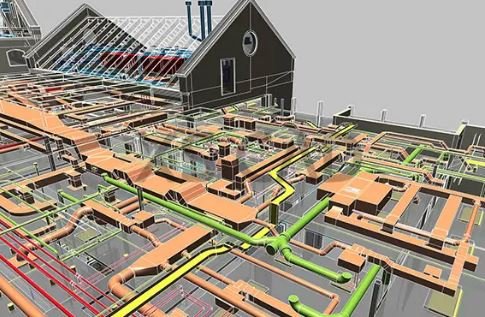Whether residential or commercial, constructing a new building in London can be quite challenging. From limited space or restricted access to tight schedules and strict regulations, you can face various issues. Even a small mistake in planning can lead to delays and extra costs. Therefore, most builders and engineers rely on smart tools and techniques to ensure accuracy and efficiency.
One of the most useful strategies is the digital site survey. It helps contractors to collect accurate information about a site or building. This data is then turned into digital maps, drawings, or 3D models that show the exact dimensions and conditions of the site, allowing architects to plan projects more efficiently and avoid costly mistakes.
Here’s a comprehensive guide on how digital site surveys can improve structural integrity and reduce costs.
Reducing Errors in Initial Measurements
Digital site surveys help you collect accurate data right from the start. They capture exact dimensions, allowing you to design confidently. For example, in MEP design, where pipes, wires, and ducts need to fit into very specific spaces, accurate initial measurements are essential. A digital survey ensures those spaces are mapped out precisely, reducing the risk of costly rework.
Saving Time During Site Assessments
Traditional surveys often take days or even weeks to complete, especially for larger or more complex sites. Digital site surveys can collect vast amounts of data in a much shorter time. Tools like laser scanners or drones can capture an entire site in hours rather than days, eliminating the need for waiting around for plans and more time to focus on the next stage of the project. This efficiency helps you stay on schedule and avoid costly delays.
Improving Collaboration Among Teams
Construction projects involve many people, from architects and engineers to contractors and managers. A digital survey produces information that can be shared across different teams, ensuring everyone is working with the same version of the site details. This reduces misunderstandings and avoids conflicts during construction.
Instead of rechecking data or redoing plans, you can focus on building. The shared digital models also allow teams to identify and solve problems early, saving both time and money in the long run.
Supporting Better Design Decisions
Digital surveys give you a clear picture of the site, including its dimensions, elevations, and surroundings. This means you can design in a way that fits perfectly with the real-world conditions and also spot potential challenges early, such as uneven ground or limited space, and plan for them before they become issues. This leads to designs that are practical, cost-effective, and easier to build.
Reducing Material Waste
One of the hidden costs in construction is wasted materials due to incorrect measurements or poor planning. With digital site surveys, you have exact data, so you only order what you need. It ensures that materials are used efficiently and waste is kept to a minimum, saving money not only on materials but also on disposal costs. In addition, reducing waste also helps with sustainability, which is becoming more important in modern construction projects.
Preventing Costly Rework
Rework is one of the biggest reasons projects go over budget. Digital site surveys reduce the chances of this happening by ensuring that all measurements and layouts are accurate from the start. You can compare the survey data with your plans at every stage to confirm everything lines up correctly. It helps you catch issues early and prevents expensive mistakes that could slow the project down.
Increasing Safety on Site
Construction sites are full of risks, but accurate surveys can help reduce them. They provide detailed information about the layout of the site and help you plan safer working conditions. For example, knowing the exact locations of underground utilities or unstable ground areas allows you to avoid dangerous accidents.
Digital surveys also limit the need for people to spend long hours on-site taking manual measurements, reducing exposure to hazards. It not only protects workers but also saves costs by avoiding delays caused by accidents or damage.
Providing Accurate Data for On-Site Work
During construction, having accurate data at hand makes every stage smoother. Workers can refer to the survey information to ensure they are building in the right place and according to the correct dimensions. This is especially useful when positioning elements that need to be exact, such as walls, foundations, or utilities.
Digital surveys also support processes like setting out surveying, where accuracy on the ground is critical for the success of the whole project. It helps avoid delays and extra costs.
In a Nutshell
Digital site surveys are faster than traditional methods because they use modern tools to collect information. They not only help builders, engineers, and contractors avoid mistakes but also ensure structural accuracy. Therefore, it is an effective strategy to save both time and money and stay compliant with building codes and other regulations.
